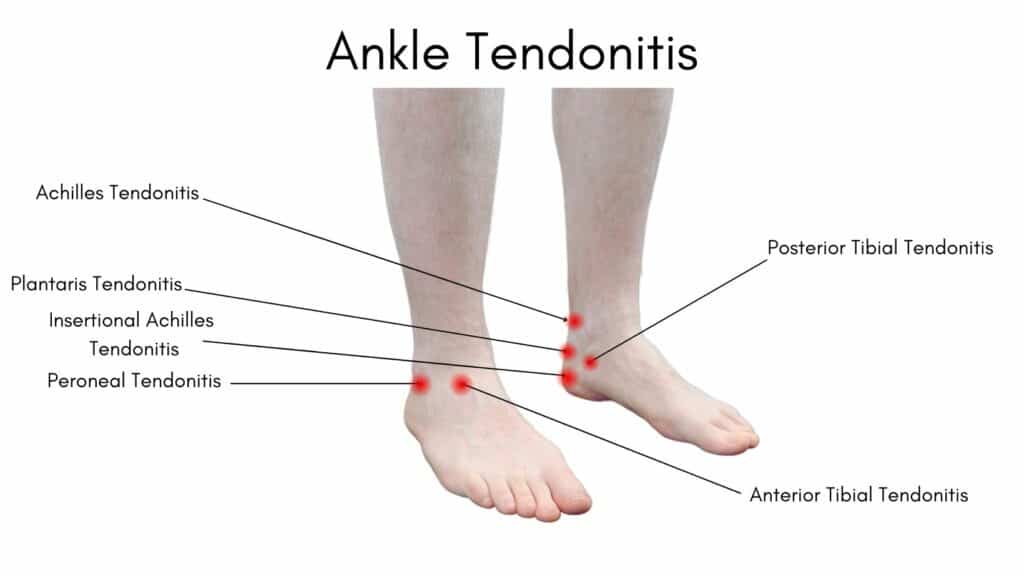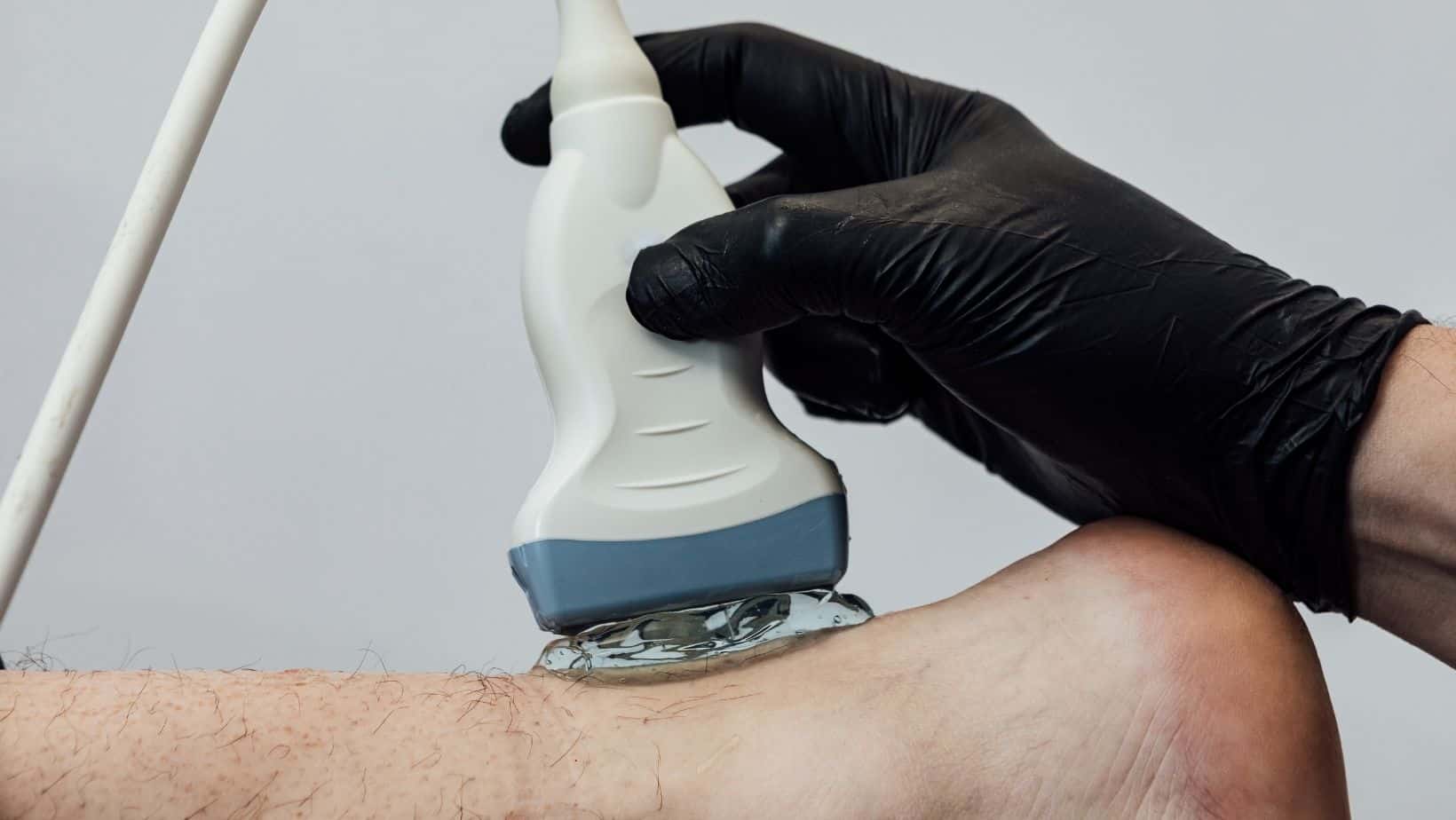Anterior Ankle Impingement
Read More >
Ankle Tendonitis is the most common type of Tendonitis due to the high levels of force that pass through the ankle joint when walking and running. A tendon connects a muscle to a bone, and some of the largest tendons in the body are found in the ankle. If these tendons become overloaded and inflamed, it results in Ankle Tendonitis.

Outer Ankle Tendonitis – Peroneal Tendonitis
Inner Ankle Tendonitis – Posterior Tibial Tendonitis
Back of Ankle Tendonitis – Achilles Tendonitis – Insertional Achilles Tendonitis – Plantaris Tendonitis
Front of Ankle Tendonitis – Anterior Tibial Tendonitis

As a principle, all forms of tendonitis can be caused by an overload or overuse. In the instances of overload, this is caused by a sudden increase in the use of a tendon. Depending on an individual’s baseline activity, an overland can be as simple as a sudden increase in step count. Clinically we see this a lot in patients who go on a city break and have a sudden increase in steps or in individuals who have a sudden increase in their running volume or intensity.
Overuse as a cause of ankle tendonitis is usually the result of a biomechanical overload of a tendon. For example, poor pronation control can overload the Posterior Tibial Tendon or overstriding when running can overload the Achilles Tendon. In each form of Ankle Tendonitis, we have individual articles to discuss the causes in greater detail.
All Ankle Tendonitis have the same symptoms. They are often stiff first thing in the morning, worse at the beginning of an activity such as running, improve during the activity and are worse afterwards. There is often minimal swelling, and the tendon is often sore to the touch.
Ankle tendonitis can be diagnosed following a clinical examination by a Physical Therapist based on a patient’s symptoms, the pattern of pain, and clinical tests. If the clinician is unsure of the diagnosis or wants to rule out other conditions in the area, an ultrasound or MRI may be requested. Both of these scans can identify pathological changes within the tendon and inflammation of the tendon.

Treatment for Ankle Tendonitis is best guided by a Physical Therapist who can provide a specific strengthening and rehabilitation protocol. For each form of ankle tendonitis, strengthening exercises are the most effective form of treatment. Still, other considerations are helpful such as insoles, changes in footwear, shockwave therapy and exercise medication.
Steroid injections are not recommended for ankle tendonitis as they can decondition the tendon, while GTN patches work well as most tendons are superficial.
Related Articles:
This is not medical advice. We recommend a consultation with a medical professional such as James McCormack. He offers Online Physiotherapy Appointments for £45.